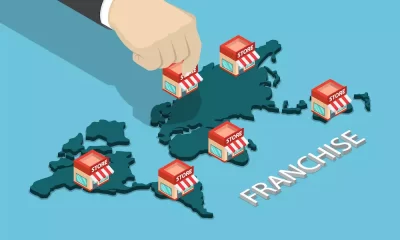Marketing
My daughter’s hockey, the hair straightener and what I learned about incentives
Not so long ago my daughter was selected to play on the wing for her high school hockey team. A few games went by and she didn’t score any goals, so I offered her a GHD hair straightener if she scored a goal? the result was not what I expected.
Content Marketing opt-in tactics
Not so long ago my daughter was selected to play on the wing for her high school hockey team. A few games went by and she didn’t score any goals, so I offered her a GHD hair straightener if she scored a goal? the result was not what I expected.
Straight after we made the deal, my wife asked me if I had thought this through properly: “Do you know how much those GHD’s cost?” she asked incredulously. “More than $400!!”
I was shocked. I thought it would be about $80, but I responded flippantly that it wouldn’t be a problem. “All I want to do is incentivise her to try harder. She hasn’t scored yet this season, and at this level her chances are rather slim,” I said, drawing on my admittedly scant knowledge of hockey. “As a left-forward her job is to create plays and move the ball up field, so the centre-forward can score.”
Well, at her very next game she scored twice within the first five minutes. She gave me a thumbs up and grin that said: “Thanks for my $450 GHD dad!” And then she never really bothered to score another goal again (I think she may have actually scored one more goal that season, but not because she was driven by any great desire to do so).
My daughter and the GHD taught me that you can incentivise people to take action, but the result may not necessarily be what you want to achieve. For example, I wanted her to try harder and she did – for five minutes. Once she had the reward she was content to have fun and be in the moment (which isn’t such a bad thing, but not necessarily what I wanted to achieve).
That got me thinking about business incentives, particularly who responds to them and why, and how effective they are.
My suspicion is that people will engage with you because they want the incentive, not necessarily what you have to offer. The problem with any old incentive – like free coffees and Apple iPad draws – is that they don’t qualify your customer, so you end up with anybody who wanders in.
In my experience, business decision makers choose incentives based on popularity and price per unit, instead of what their target market might really want (this is particularly true of B2B).
Mostly what your target market wants is a solution to a problem, or to make a wise buying decision. An incentive that helps them to do one or the other may not be cool or popular, but it will appeal to your target market and nobody else because it is problem specific – which is why it’s also a great qualifier.
I recommend information pieces – such as white papers, bespoke apps and ‘how to guides’ – as opt-in incentives on your website because while they are not cool, they are something your target market, and only your target market, will be interested in.
A good opt-in device on your website is really an incentive for people to register their name and email address for future contact. There’s every chance they may unsubscribe at a later date (unlikely if the information you send them is of real value), but at least most of the leads will be well qualified.
Of course you may be at a trade show, or running a market survey of some form or other where giving away an incentive may be a good idea, but instead of petrol vouchers for example, think about how the incentive can work harder for your business, whether its simply promoting brand awareness or qualifying leads.






